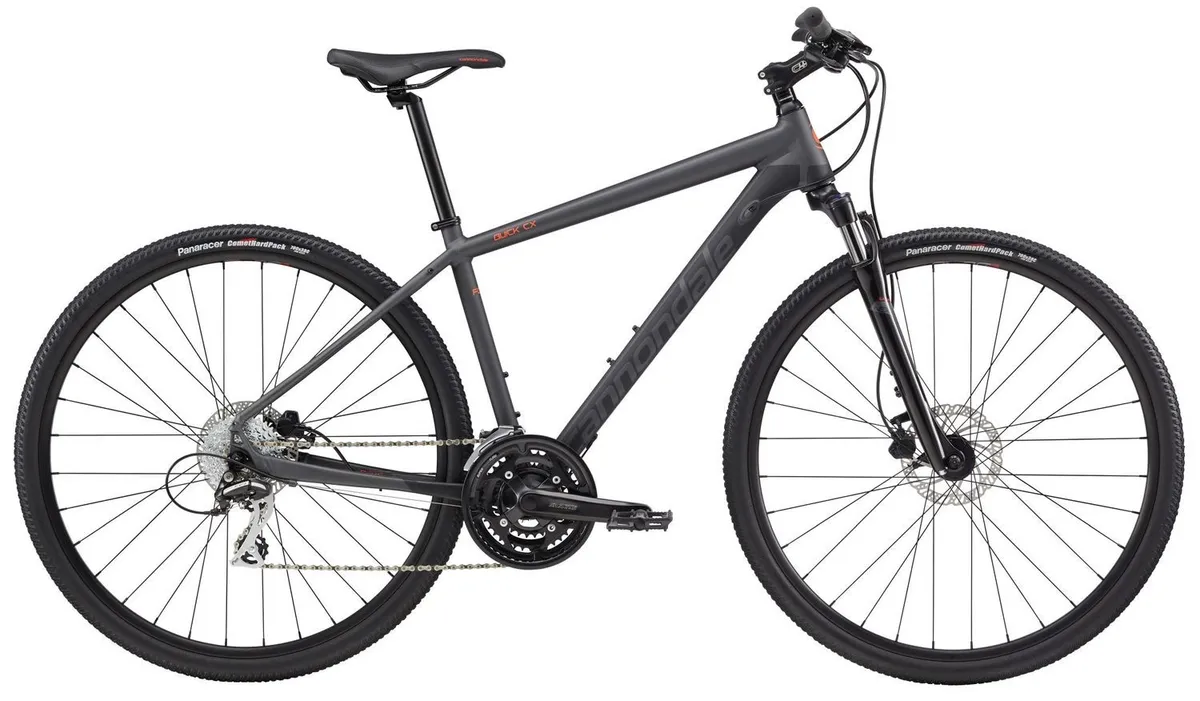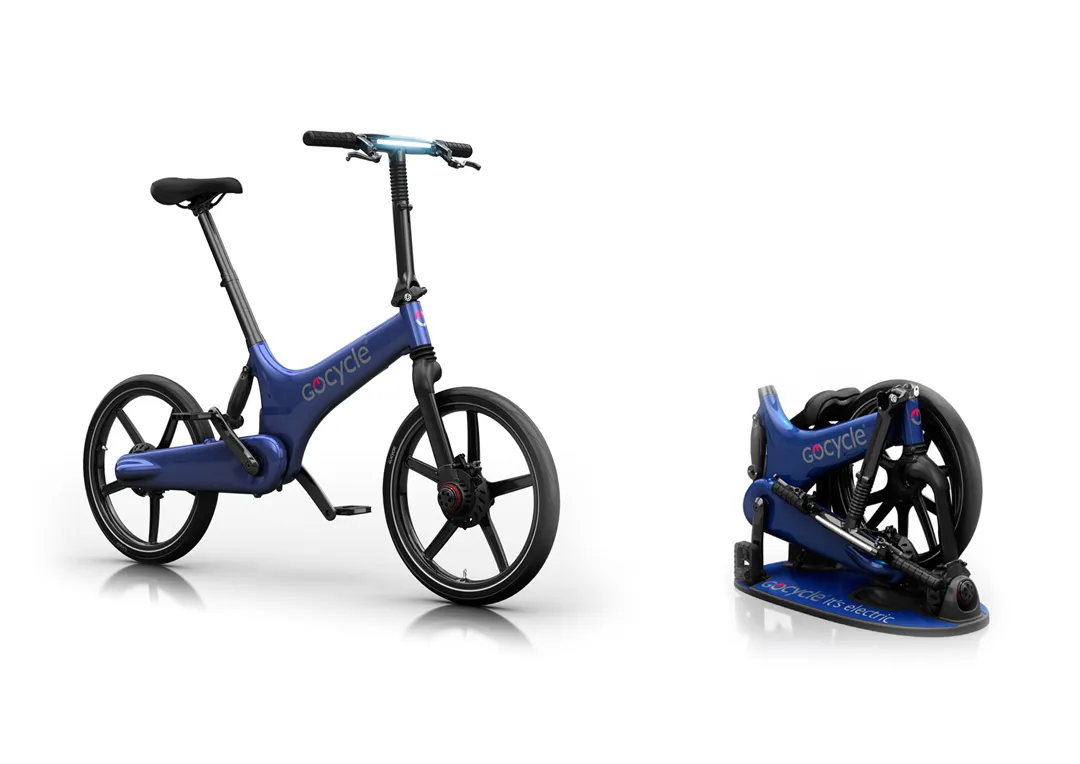So what is an electric bike? It’s exactly like a normal bike, except it has an electric motor as well as pedals to propel it.
And what’s the point of that? Convenience, mainly. It’s so you can commute to work without exhausting yourself and getting so sweaty that you need a change of clothes when you arrive.
So I’ll be sweat free. Will I be any faster? Possibly. That depends on how fit you are and how much pedalling you’re prepared to do. You can pedal as much or as little as you like, but there’s 15mph restriction on the motors in the UK.
15mph?! I can do more than that with just my legs. Maybe so, but we’re not talking about what speed you can do; it’s the motor that’s restricted to 15mph. The idea is you pedal along normally and the motor gives a boost to make getting up hills or across busy junctions a little easier. If you’re pedalling already and you hit the red button, the extra oomph from the motor will pull you along a bit quicker, and probably faster than 15mph. But if you want to let the motor do all the work, then I’m afraid 15mph is your top speed.
And will I need a licence or anything? Nope. As long as you’re over 14 years old, you’re fine; provided it’s the sort of bike like those tested here, which you have to pedal to make the power kick in. Technically speaking, these aren’t electric bikes, they’re actually ‘pedelecs’. An electric bike doesn’t need to be pedalled. Both are legal in the UK, but in mainland Europe electric bikes are equivalent to mopeds and require a licence, insurance and tax.
You haven’t said anything about them being environmentally friendly. Well, as far as emissions are concerned, they’re certainly greener than a car or public transport. But they still need regular recharging and, unless you get your electricity from solar panels on your roof, chances are it’s coming from a fossil fuel-burning power plant. A normal pushbike would be even greener, but you’d have to wash your sweaty clothes more often, and those same power plants are probably heating the water in your washing machine. Nothing’s perfect, but as far as powered personal transport is concerned, these bikes are pretty good.
So they won’t save the planet. Will they save me any cash instead? Not initially, as they’re expensive to buy. But, in the long run, compared to seasonal rail tickets or the cost of buying, insuring, taxing, parking and fuelling a car, these bikes will save you money.
Even with the extra electricity I’ll be paying for? Yep. A full charge works out at only a few pence for anything up to 20 miles of travel. And that’s travel that won’t involve jams, connections or delays. Better still, you’re always guaranteed a seat.
HOW WE TESTED THE ELECTRIC BIKES
Ride:First and foremost, these are all meant to be bikes, whether you’re using the motor or not. So what are they like to ride?
Drive:Hitting the ‘boost’ button is supposed to take the effort out of pedalling. Does it get you up the hills more easily?
Recharging:How often do you need to ‘fill ’er up’? Do you need to run the battery down fully and how far will a full charge take you?
Convenience:How easy do these bikes make commuting? Will clothing get caught up and covered in oil? Can they be carried easily?
1
Xerotech ePedal Compact
Price: £449.00
For: This bike is ridiculous fun and brings a smile to your face whether you’re riding it or watching someone else ride it. Part of the appeal may be its tiny-wheeled, ‘clown’s-bike’ looks, but the motorbike-style throttle control really adds to the enjoyment. What’s more, it means you can stop pedalling once the power’s on and let the motor take over. It folds down if needed, but it’s small enough to ride around indoors, which means you can roll right up to a socket and recharge it without having to remove the battery.
Against: While the motor in the front hub does a decent job of towing you along, with just one small gear to pedal, your speed never gets particularly high. And those tiny wheels make for a skittish, nervous ride. If you’re used to big-wheeled bikes, it can be a little unsettling, especially when you find yourself in amongst traffic on busy roads. The power assistance does make climbing hills easier, but grumbles on steeper or sustained gradients.
SPECS
Weight: 14.25kg Battery: Lithium-ion 24v 8Ah Charge time: 4-5 hours Range: 15 miles
Ride: 3/5
Drive: 3/5
Recharging: 3/5
Convenience: 4/5
Focus rating: 3/5
2
Cytronex Cannondale Quick CX

Price: £1425.00
For: Take an electronics company’s battery and motor technology and add it to a pedigree cycle company’s city bike and you end up with the Cytronex Cannondale Quick CX. It’s the most ‘normal’ bike here and, as well as a near-silent motor in the front wheel and a battery disguised as a water bottle, you also get 24 gears to pedal with. The battery also powers front and rear lights and even a little spotlight for the speedometer on the bars. This is the easiest bike to use without power and the best for longer, hillier rides that needn’t just be commutes to work.
Against: It’s a little trickier to use the power on this bike than others, with three buttons spread across the bars. Their functions are easy enough to get your head around, but it’s not as immediately user-friendly as the other bikes here. If you’re using it for commuting, manhandling it on and off trains, or up steps to your office/flat is quite an effort.
SPECSWeight: 17.5kg Battery: Cytronex 4Ah NiMH Charge: 1.5 hours Range: up to 20 miles
Ride: 5/5
Drive: 4/5
Recharging: 5/5
Convenience: 4/5
Focus rating: 4/5
3
Gocycle

Price: £1495.00
For: As well as being the sleekest- and most advanced-looking bike here, the Gocycle is also the most complete commuting solution. Rather than simply adding an electric motor to an existing bicycle, it’s been designed from the ground up as an electric bike specifically for city use.
What that means is that as well as being perfectly suited to riding across town on busy streets, it’s also phenomenally easy to carry around. The battery and motor are always the heaviest components on any electric bike, and as both are positioned at the front it makes lifting them awkward. But the Gocycle has been constructed so its centre of gravity is right in the middle. A lightweight electric motor keeps front-end weight down, and a long battery in the bike’s main body distributes the rest of the weight evenly along its length. Sling an arm under its belly and the bike balances perfectly in your hand.
Against: Fat tyres and rear suspension make life comfortable and the small wheels make for a responsive, nippy ride, while disc brakes keep everything under control. Hit the red button and the boost kicks in positively to get you up to speed or up a hill. And there’s no need to worry about getting your trousers caught in the chain as the three-speed drivetrain is fully enclosed.
As friendly as those big, balloon tyres are, they’re mounted on little wheels. And if you’re coming to them from a ‘normal’ bike with full-sized wheels, they can take a little getting used to. A ride quality that some might see as responsive, could be described as ‘twitchy’ by less confident riders. Other than that, the worst you can say about the Gocycle is that the motor’s a little on the loud side.
SPECSWeight: 17.2kg (including lock, stand & mudguards) Battery: 9Ah NiMH Charge time: 3.5 hours Range: up to 20 miles
Ride: 4/5
Drive: 5/5
Recharging: 5/5
Convenience: 5/5
Focus rating: 5/5
Follow Science Focus onTwitter,Facebook, Instagramand Flipboard